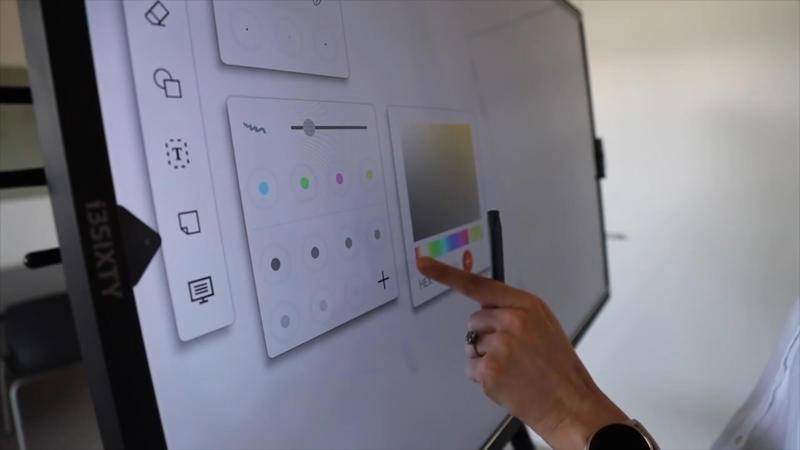8 Pro Tips to Master Body Language: Ace Your Next In-Person or Virtual Meeting
Introduction
Effective communication is critical to achieving success in a business setting: it helps you build lasting relationships, and it's beneficial to both employer and employee as it helps to build strong relationships, increase productivity, and achieve common goals. While verbal communication is essential, nonverbal communication, such as body language, is equally important. Body language can help to convey a message in a meeting context, reveal a point of view before a word is spoken, or show when you are actively listening and fully engaged. It can also help to connect with your colleagues, build better professional relationships, and ultimately contribute to your success.
In this article, we will explore how you can use body language in a business setting to your advantage, whether meeting face-to-face with colleagues or virtually. We will discuss the impact of body language on communication and share tips on how to use it effectively. By the end of this article, you will better understand how to communicate effectively using your body language, thus enhancing your professional relationships.
The science behind body language in meetings

According to Albert Mehrabian in his often misinterpreted book "Nonverbal Communication" (1972), 55% of our communication is non-verbal, 38% is transmitted through the tone of our voice, and only 7% is the actual words we speak. While these percentages vary according to the situation one finds themselves in, Mehrabian conveyed that to be a good communicator, one must master non-verbal communication.
Nonverbal communication is just as important as verbal communication and can be used to communicate our message effectively. To use body language effectively in a meeting, presentation, or when communicating with colleagues, the first step is to become aware of it. Body language helps you connect with them and build better professional relationships. While in a meeting, focus on your body language and try to understand what you can do to improve it.
How to master the art of nonverbal communication?
Effective communication involves more than words; it also encompasses nonverbal cues such as body language. Many professionals may not give body language during meetings the attention it deserves. However, what at first sight may seem like trivial things, such as posture, facial expressions, and hand gestures, can contribute significantly to how effectively one can convey a message. Body language can show a person's point of view before speaking and signal whether they are fully engaged or disinterested in the conversation. Moreover, by using body language effectively, individuals can prove confidence and credibility, enhancing their ability to connect with colleagues and clients.
For example, maintaining good posture and using appropriate hand gestures convey professionalism and interest. Particular attention must be given to facial expressions, as they can be easy to read and thus reveal underlying intentions or emotions. Therefore, paying attention to one's body language during professional interactions can help individuals create a positive impression, build rapport, and improve their ability to influence and persuade others. In addition, the opposite is true: learning to read nonverbal cues during meetings may give you the edge in negotiations or give you essential insights, much more than simply listening to somebody would.
Eight increasingly advanced body language tips to become a better communicator

Improving your communication skills takes consistent practice, so it's worth considering the following techniques. For your convenience, we sorted the tips by difficulty. If you're just starting, look at the first few; once you feel more confident with your body language, you may find the later suggestions more useful.
1. Improve your posture
Sitting straight is essential to mastering body language, making you look more attentive and confident. To make it easier, use a chair with good back support, adjust the height so your feet are flat on the ground, and do not forget to get up to walk if you're sitting for a long time. When standing, relax your shoulders and look up rather than stare at the ground.
Pro tip: Consider using a standing support chair or a leaning stool for standing meetings to help you maintain a correct posture and appear more relaxed.
2. Maintain eye contact
Look directly at the speaker to show you are actively listening but avoid staring too much if you notice it makes them uncomfortable. Do not only look at the eyes but also their face. Now and then, look at something else in the room to avoid making the situation awkward.
Pro tip: Make a conscious effort to look directly at the camera during remote meetings, as you would do face-to-face, to connect more with who you are talking to.
3. Use appropriate hand gestures
Your hands can become a helpful tool when communicating, as they complement and drive your message. Having your hands open is a sign of transparency and honesty, while it is essential to remember that pointing or crossing your arms can look aggressive to some. At the same time, you should find a balance with your use of hand gestures: too much can come off as distracting. To practice, ask a friend or a relative to give you feedback or use a mirror to check your progress.
Pro tip: If you're nervous, you can keep your hands in your lap to control your hand movements. Doing so will help you stay calm and won't reveal your nerves to others.
4. Actively listen and engage
Show engagement by nodding, using verbal cues like "mm-hmm" or "I see," and, at times, repeating critical points to the speaker to show them you are paying attention and understanding them. Give the person you are chatting with some room to talk, even if they are taking some time, and avoid interrupting them. In addition to using positive and accommodating body language, add verbal cues to demonstrate your understanding and ask for more details where appropriate. This approach will make the speaker feel listened to and encouraged to share their thoughts.
Pro tip: Rephrase the speaker's point as a question to demonstrate you are actively listening. Should they say, "We have sold more interactive displays than in the previous quarter," you can answer, "What you are saying is that there is a positive trend in the market?".
5. Avoid distractions
Ensure you are entirely focused on your meeting by silencing your phone and closing any content on your laptop that is irrelevant to the current task. Also, minimize fidgeting and other distractions, such as nail biting or squirming in your chair, as they may be interpreted as disinterest or disrespect.
Pro tip: Try doodling or writing notes to keep yourself occupied if you're prone to fidgeting, allowing you to focus more on the meeting.
6. Be mindful of your facial expressions
Pay attention to your facial expressions, often smile when appropriate, and avoid frowning or looking bored. Eye contact and smiling convey warmth and openness, making the speaker feel more comfortable. On the other hand, crossing your arms or looking down may demonstrate defensiveness or disinterest, and it is in your best interest to avoid that.
Pro tip: Learn to spot a fake smile. Genuine smiles make people squint and give them visible crow's feet. On the other hand, a fake smile often exposes the bottom row of teeth and does not move the muscles around the eyes.
7. Match the energy level of the room
Try and assess the mood in the early stages of the meeting. Then, adjust your tone, pace, gestures, and posture accordingly. Pay attention to where the conversation is going and always be ready to adapt should the circumstances change. Use casual gestures and postures in informal settings and stick to more formal and deliberate movements in formal meetings.
Pro tip: Keep an open posture and positive body language even if the meeting atmosphere is tense. Not only will you feel less pressure, but you could also encourage others to be more positive.
8. Use the surroundings to your advantage
The size of the room and the number of participants in the meeting are vital factors that should affect your body language. Standing in a face-to-face meeting helps convey more energy and engagement in a small meeting room. Conversely, you can use the space to your advantage in a larger conference room. Moving closer to the speaker or pointing can emphasize key concepts, while you should be careful to avoid anything distracting, such as noise or unnecessary movements.
Pro tip: if an interactive display is available in the room, you can use it to capture the attendees' attention and explain your points in an interactive and engaging way. You can use a mobile interactive display, such as the i3SIXTY 2, to facilitate the meeting: write an agenda, flip through your presentation, or use the digital sticky notes function to brainstorm ideas with your audience.

How to make a strong impression in your next virtual meeting?
In virtual meetings, it is essential to create a lasting impression to effectively convey your message and ensure the people you are meeting with will have a positive memory of you. You may think body language is less important in virtual meetings than face-to-face encounters. However, you should also remember that most meetings nowadays happen with a video camera for most participants, meaning that body language in virtual meetings is as vital as ever. Pay attention to the lighting in the room and carefully place the camera to show your best side and ensure the room is spotless. Furthermore, choosing the right clothes for the occasion is also vital to making a good impression in a virtual meeting. Another thing to consider is that using the right technology can also make a strong impression on others: investing in a smartboard for your business can contribute to more interactive and engaging meetings. When deciding where to meet, you should choose a quiet and comfortable room or environment to ensure minimal distractions, allowing you to focus entirely on your virtual meeting.
You should also remember that body language is part of nonverbal communication. When preparing for your next virtual meeting, pay attention to your tone of voice and choice of words, as they can make or break your impression to your listeners. Virtual meetings are not free of technical issues, meaning that having a good microphone and speakers can make it easier to understand by others and for you to understand them.
Reading these suggestions should make you feel more prepared to make a solid impression on your colleagues in your virtual meeting, leading to more productive and engaging conversations and discussions.
Conclusion
As Mehrabian's theory explains, mastering nonverbal communication is essential. You can improve your body language by becoming more aware of it and learning to use it to build strong professional relationships. Small cues such as posture, facial expressions, and hand gestures can significantly affect how people perceive you and how effectively you can convey your message. Learning to read other people's nonverbal cues can also provide valuable insights and advantages in professional situations.
The article covered eight ways to improve your body language in a business setting, starting with ones that are simple to learn and continuing with increasingly advanced techniques. In addition, you have also read a few tips for exploiting body language in virtual meetings. Consistently applying these tips will, over time, make you a better communicator.
Frequently Asked Questions about Body Language
What makes body language more impactful than verbal communication in a professional setting?
Nonverbal communication tends to be more influential because it transmits understated signals, emotions, and intentions that might not be communicated through words. Moreover, it can support or contradict spoken messages, which makes it a vital element in effective communication.
How can using body language enhance effective communication in a corporate environment?
Effective nonverbal communication can foster rapport, build trust, and display self-assurance, resulting in stronger relationships and fruitful collaborations. Furthermore, it can aid in delivering messages with greater clarity and minimizing miscommunication.
Which aspect of body language is most crucial for effective communication in a business environment?
The most critical aspect of nonverbal communication depends on the situation, but keeping eye contact, exhibiting a poised posture, and employing suitable gestures are all essential components for successful interactions in a work environment.
What is the importance of using body language effectively in corporate communication?
Using body language effectively is important because it helps clarify the message, adds credibility, promotes positive working connections, and contributes to a more cooperative and productive work atmosphere.
Why is body language considered a more accurate indicator of a person's true feelings and intentions than words in a business context?
Nonverbal communication is viewed as more trustworthy because it is generally an involuntary and unconscious manifestation of a person's genuine emotions and intentions. It is less prone to manipulation or deception, rendering it a more dependable source of information within a professional context.

